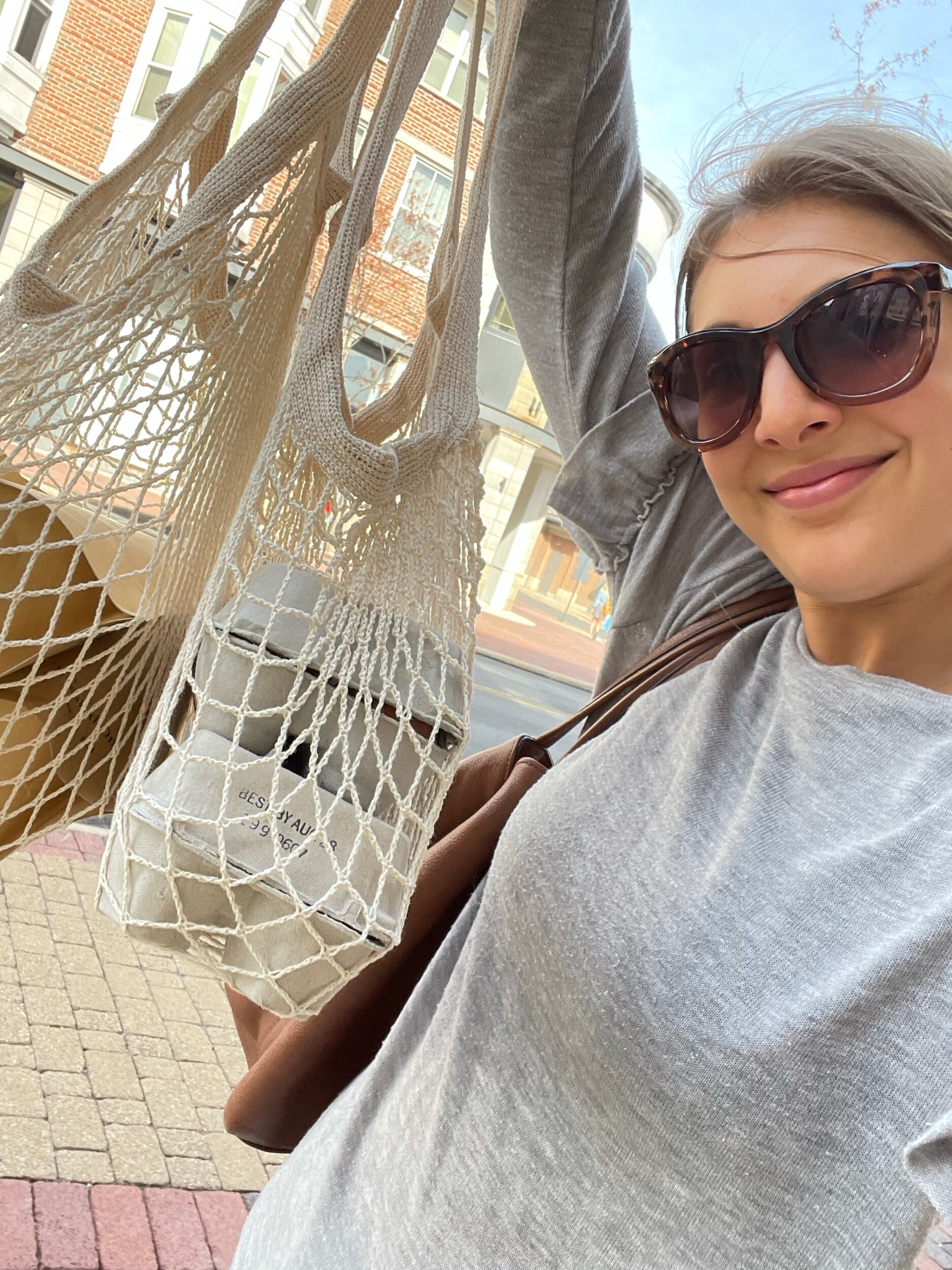One of my favorite summertime activities is waking up and heading to the local farmer’s market. When I’m traveling in a new city, it’s such a fun way to explore and connect with locals. When I’m at home, it is a great way to get outside and get moving on a weekend morning.
Whether you’re a Farmer’s Market novice or have been going for years, read on for some quick tips to optimize your experience!
Where To Go:
As a west sider, I’m a regular at the Crocker Park North Union Farmer’s Market. But, NUFM offers several different markets all week long spanning from east to west! Here’s why I love the NUFM:
• the farmers, vendors, and staff are always so warm and friendly
• the organization holds rigorous standards for market entry— as a “certified producer only” market, you know your food is being grown on Ohio soil by the group of people selling it to you!
• Summer and winter markets bursting with seasonal produce, fresh meats, and other yummy homemade items!
• accessibility— NUFM offers SNAP assistance to make fresh, wholesome food available to everyone
You can get specific details the North Union Farmer’s Market closest to you here.
When To Shop
I suggest arriving at the very beginning if you’re seeking out hot ticket items (like certain cuts of pasture raised meats). If you’re searching for veggies only, you could try holding out until the end of the market. Some vendors might be willing to drop a dollar or two off original prices to ensure the produce gets sold and doesn’t go to waste!
What To Know Before You Go
Let it be an event! The people at the stands are passionate about the work they’re doing and the goods they’re selling. These are small organizations relative to the monstrous entities supplying food to big name grocery stores!
PARKING. Check out potential parking areas before you shop. This way, you know how far you’ll have to walk and, consequently, what is a realistic amount of things to carry with you!
Speaking of things to carry with you…I highly advise wearing sunscreen or a hat, bringing reusable bags, having cash in your wallet (some stands might not take credit cards), and toting a small cooler with ice for any meats you may purchase!
You Vote With Your Dollar… see below on why I support local farmers!
Why Local?
To put it simply, you’re in-the-know about how your food is grown, sourced, and cared for.
At a farmer’s market, you are typically buying from the farmers themselves or individuals who work very closely with them! Don’t be afraid to ask questions such as...
•Are your cows grass finished or grain finished?
•What practices do you use to protect your crops from bugs and pests?
•When were these vegetables harvested?
•What type of cows produce your milk?
•Are your chickens raised in pastures?
•Do you offer farm tours or volunteer opportunities?
•What are your favorite ways to prepare this cut of meat?
In addition to developing a relationship with your local farmers, shopping local is great for your health!
Immune health: Eating vegetables and fruits grown in local soil exposes us to a variety of healthy microbes. These support healthy gut function and can even protect us from local strains of pollen and other allergens! The book “Eat Dirt” by Dr. Josh Axe is a VERY informative read that breaks this concept down!
Richer nutrients: when we eat locally, the distance our food has to travel after being harvested is significantly reduced. “Transportation time for fruits and vegetables grown in the southern hemisphere for winter and spring consumption in the U.S. ranges from as little as a few days if transported by air freight to several weeks if sent by refrigerated ship. At the retail store, fruits and vegetables may spend 1–3 days on display prior to being purchased by the consumer, who may store them for up to 7 days prior to consumption. This means that fresh fruits and vegetables may not be consumed for a significant length of time following harvest, during which time nutrient degradation may occur.” (UC Davis)
Connects us to How Nature Intended Food: As a weekly buyer of boneless, skinless, chicken breast at the grocery store, you could imagine my shock when I began purchasing bone in, skin on, wing attached chicken breasts from the farmer’s market! Even in the aftermath of a long low fat era, many of us still turn up our noses to fattier cuts of meat. But, what we strip away in the process are vital nutrients like collagen, selenium, and zinc. For more info on “Rooted food, read this blog.





